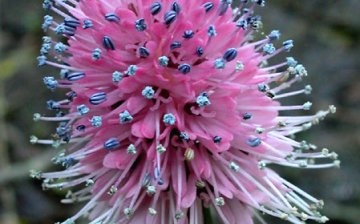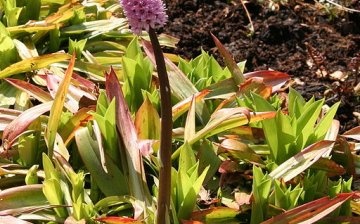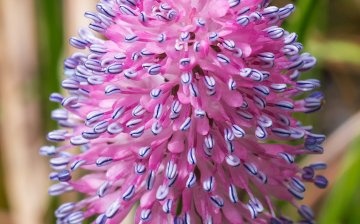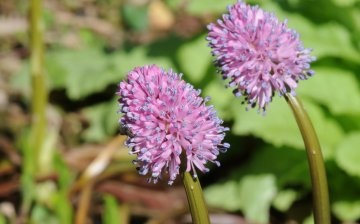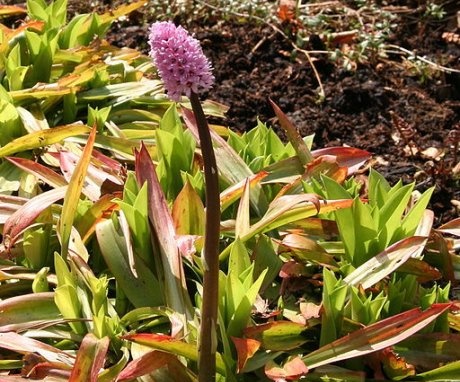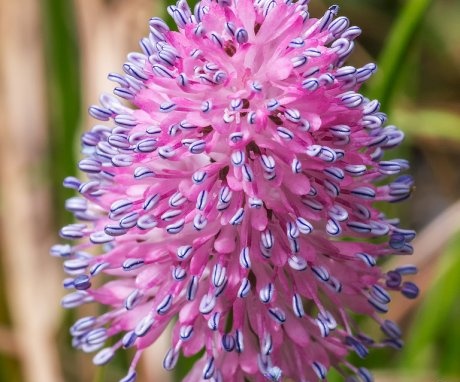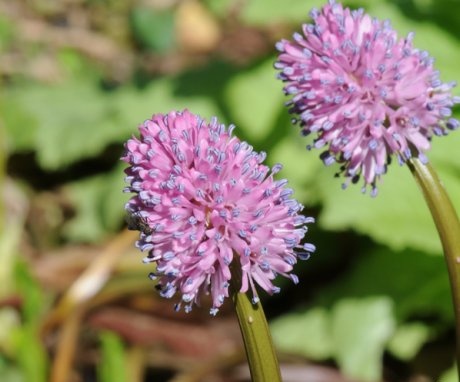Gelonias: useful properties and rules of cultivation
Plants inhabiting swamp soils often have valuable properties that are used by traditional healers. They are also used in traditional medicine, homeopathy. These representatives include the species of the Melantiev family, the Gelonias, listed in the Red Book, found in some areas of America.
Since the end of the 20th century, the gelonias plant has been included in the list of rare species. It was first described by renowned botanist Carl Linnaeus based on samples found in the swamps of New Jersey. The very name of the flower is translated from Greek as swamp. Americans call it swamp carnation.
Content:
- Biological description of Gelonias
- Rules for growing a species in the garden
- Useful properties of a plant, application in medicine
Biological description of Gelonias
Gelonias vesicle lives well in the temperate climate of the Atlantic plain. It belongs to perennial plants. Having a bare stem from thirty to sixty centimeters long, the flower is kept in the marsh soil with the help of a thick tuberous rhizome. At the base there are narrow leaves up to forty centimeters long, at first they are dark green, gradually they turn into red-brown in autumn. Up to the top, the stem is, as it were, enveloped in a film of leaves.
And the plant is crowned with small flowers of pink or purple tones, collected in a dense brush.
Filiform stamens with blue anthers adorn the inflorescences. The plant blooms in spring, after which oval capsules appear in place of flowers with a large number of brown seeds, sometimes decorated with white tips.
The swamp culture prefers shady, damp banks of water bodies or places on humid peat areas. Gelonias makes high demands on growing conditions, without being distinguished by winter hardiness. A bright representative of the swamp world can be grown in a garden, which is especially practiced in Europe.
Rules for growing a species in the garden
Gelonias requires special conditions for growth and life:
- The best place to plant a plant is on wet shores. reservoirs... In a small area, you can create a special peat bed for it. The ideal soil would be loam with a lot of rotted organic fertilizer... You can add sphagnum moss to wet soil, which retains moisture well.
- The flower prefers shade more.
- Gelonias is planted with tubers, the seed method of reproduction is not practiced.
- The sensitivity of the plant to cold requires careful shelter for the winter.
- The main requirement for care of marsh carnations is constant soil moisture, its nutritional value. Being too diligent about this can also hurt. You can feed the slurry of the marsh soil with seaweed.
After two to three years, the plant is renewed, carefully digging up the old one, separately planting young shoots. Gelonias is not only a beautiful, but also a useful plant, it is difficult to grow it, so you need to stock up on the knowledge of growing such species.
Useful properties of a plant, application in medicine
Gelonias is used in traditional medicine and homeopathy to treat many pathologies:
- Irritation of the stomach, in which the patient feels tightness, pressure in this area, he has an eructation, burning sensation, is relieved by a homeopathic remedy.
- With a gloomy mood, dizziness, headaches, gelonias helps. The components of the plant relax the patient's nervous system, he will be able to adequately assess the situation.
- For women, plant preparations are especially useful. They help with uterine atony, back pain during menstruation, prolapse of the genital organ. Prescribe flower-based drugs for threatening miscarriages, they relieve tension in the birth canal.
- Funds with gelonias will relieve lethargy, fatigue, and improve health after serious illnesses, surgical operations.
- The plant is especially effective in relieving back aches, painful sensations in the lower abdomen.
The benefits of the plant have been appreciated for a long time; you can buy preparations with the components of gelonias in homeopathic pharmacies.
More information can be found in the video:



